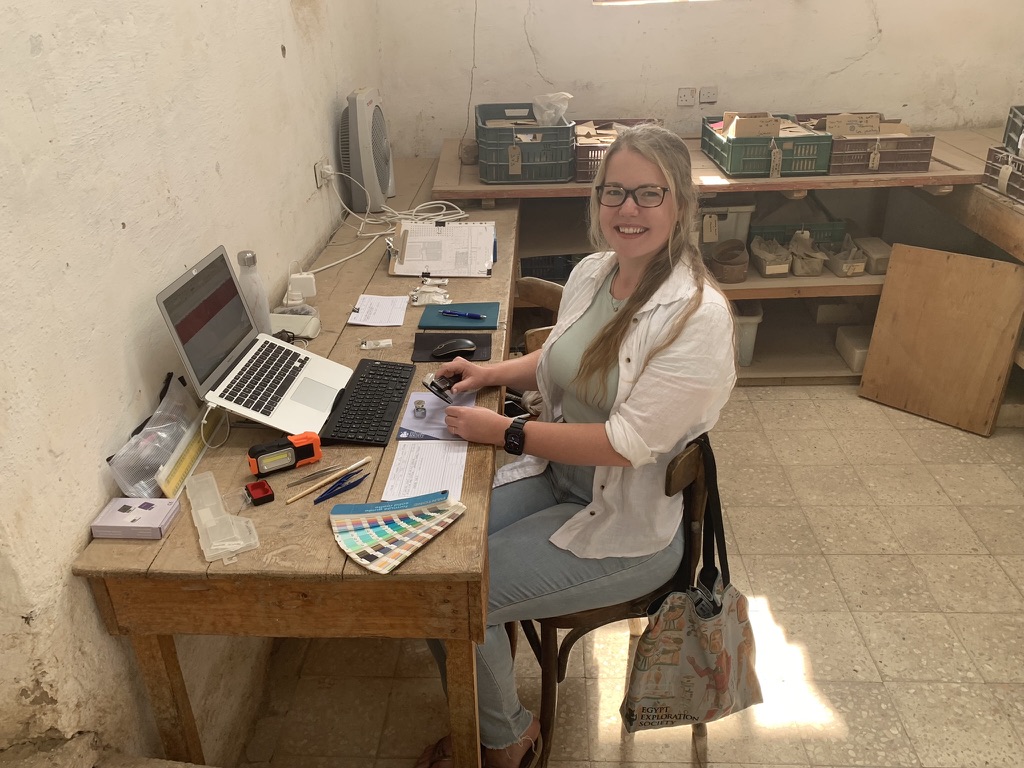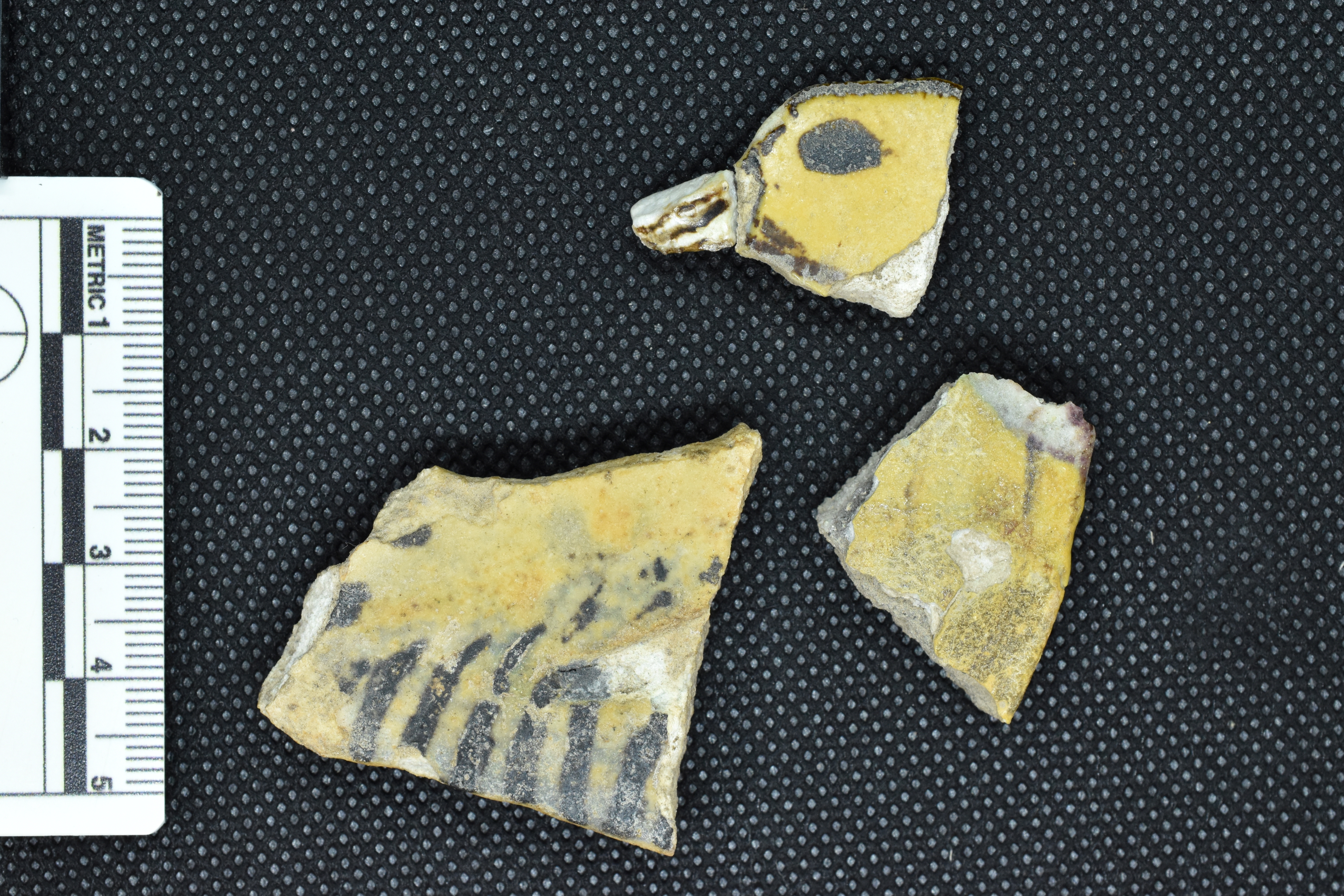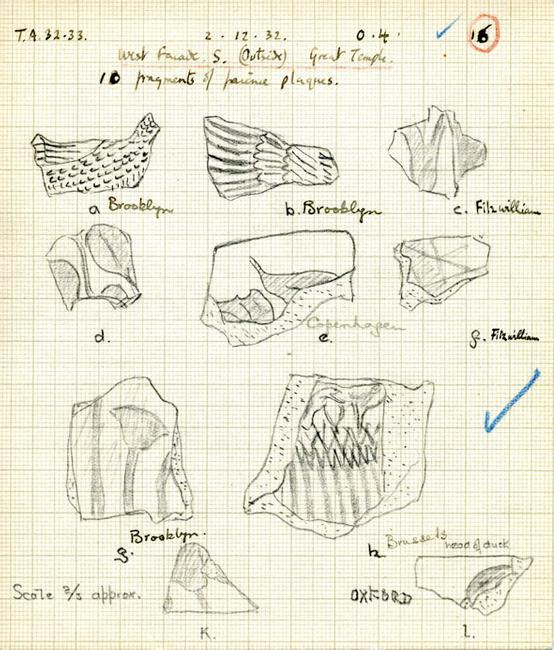The Amarna Great Aten Temple Faience Inlays Project (2022-2025)

The Amarna Great Aten Temple Faience Inlays project is a small research project directed by Dr Stephanie Boonstra within the larger Amarna Project, directed by Prof Barry Kemp. This project aims to comprehensively study the 350 faience inlays that have been excavated from the current work at the Great Aten Temple at the site of el-Amarna in Middle Egypt. The majority of the inlays are monochromatic, but others depict detailed marshland scenes; some of which were individually shaped into flowers, fish, and birds. It has been hypothesised that these faience inlays may have originated in the Small Palace located just west of the Long Temple (both within the Great Aten Temple complex), but a thorough study of their find contexts is required to understand from where the inlays were located in antiquity, prior to the ancient destruction of the site.

Dr Stephanie Boonstra in the Amarna dig house examining faience tiles and inlays (photo: Anna K. Hodgkinson; courtesy of the Amarna Project).
The Great Aten Temple was initially excavated by a team led by W. M. F. Petrie in one season from 1892-1893, and then again by the Egypt Exploration Society during their 1920s and 1930s excavations at the site. Many faience inlays were discovered during this work and were subsequently distributed to museum collections around the world. Many more inlays were missed (accidentally or deliberately) by these excavations; subsequently, the Amarna Project has discovered many fragmentary inlays from both unexcavated areas of the temple, as well as, in particular, the old spoil heaps from the Egypt Exploration Society’s excavations, directed by J. D. S. Pendlebury, in the 1930s.

A group of fragmentary faience inlays representing a yellow bird from the Great Aten Temple (photo: Stephanie L. Boonstra; courtesy of the Amarna Project).
This project entails four main approaches: 1) the examination and cataloguing of the faience inlays excavated at the Great Aten Temple between 2012 and 2022 that are in the storerooms at Amarna; 2) the study of the EES archive from the 1930s Pendlebury excavations for further information on the original excavation (but subsequent deposit in spoil heaps) of many of these faience inlays from the Great Aten Temple; 3) researching the use of faience inlays and their production at Amarna and comparing with the faience inlays found elsewhere on site (in particular those excavated from the Main City in recent decades); and 4) comparing the Amarna faience inlays with those discovered at similar sites (e.g., Qantir, Tell el-Yahudiyeh, Malkata, etc.).
Two EES Amarna object cards depicting faience inlays discovered during the 1932 excavation of the Great Aten Temple (EES.TA.OC.32-33.016, EES.TA.OC.32-33.030; courtesy of the Egypt Exploration Society).
The aims of this project are to determine how the faience inlays were created at Amarna, into what and where the faience fragments were inlaid, and what their overall purpose was in the context of Amarna art and architecture.
EES-affiliate programme
This programme supports Egyptological research projects by providing this network as well as access to logistical services, funding, promotion, and publishing opportunities.



